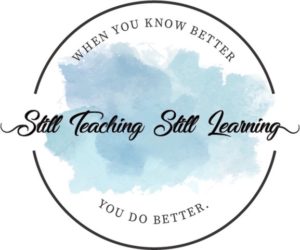
One of the biggest differences between upper and lower elementary is the level of independence. Most of the time that’s a good thing! But If you’re new to teaching upper elementary students, you may be wondering about how much independence is appropriate to expect or how to best encourage that independence. So here are some suggestions for how to do that!
By the way, if you’re new to upper elementary grades or just want to know what to expect, here are eight generalizations I have found helpful to know. (This is the fourth post in a series where I will discuss each of these eight topics in more depth, along with some tips for how to address upper elementary students’ needs. You can read the first post in the series HERE, the second post HERE, and the third post HERE.)



1 – They want to know the rules and expectations & they expect the teacher to be “the boss”.
2 – They thrive on routine with occasional changes to liven things up – they want you to be predictable, but engaging & fun.
3 – They want to be part of a supportive community. They don’t want to be embarrassed in front of their peers or to feel “stupid”. They worry about bullies.
4 – They want to be more independent & to be asked for their input. They still want to please their teachers (even though some may not show it).
5 – They still love to help and to feel useful.
6 – They want to know their teacher likes them & respects them
7 – They want to learn more about the world and about topics they care about. They do question things and want to know the “why.” They are starting to understand different viewpoints besides their own, which makes for some thoughtful classroom discussions. They still get excited about learning! That being said, they will be at very different achievement levels (similar to lower grades), but they are better at hiding their lack of understanding. The curriculum is more difficult, but they are capable of rising to the challenge. Most of them love to work together and find that to be more engaging.
8 – They still want their grownups/families to be proud of them.



In this post, we’ll focus on the observations 4 and 5 since they go together well. Upper elementary students want to be more independent and to be asked for their input. They generally want to please their teacher and do the right thing (although they may not think it’s “cool” to show that). They still love to help and feel useful. Asking for their input and asking them to take on more responsibility are also great ways to show them the care and respect they crave.
One of the most important things to do here is to teach them what you expect from them. This will help them to be more independent while still doing the things you want them to do.
Here’s how to do that.



*Have routines for every part of your day. Teach them the routines, and then expect them to follow them. Examples include: morning routines for entering the classroom, routines for lining up and traveling through the school, routines for re-entering the classroom (after specials or lunch/recess), routines for transitioning from one subject to another, routines for the end of the day.
As you teach and practice the routines, take note of which routines might need a visual reminder in the form of a chart or a list of reminders on the board. (Morning routines often need a visual reminder, at least at first.) But once you have taught the routines and students have successfully practiced several times, expect them to follow the routine independently.



*Start out a little more on the strict and structured side with routines, procedures, and expectations. You can always loosen up later when they show you they are ready for that. They expect you to be “the authority.”
*Encourage them to explain their thinking. Have them give the reasons for their opinions, tell how they solved a problem, explain what makes them think something. Make sure you are showing genuine interest in their thoughts.
*Affirm what they do correctly and help them to revisit the parts that are not correct (or re-do something that needs attention).



*Watch for little tasks that your students can be “in charge” of – such as sharpening pencils, organizing supplies, checking off papers or homework, organizing bookshelves, etc.
There are all kinds of ways to organize class jobs and you can make that as simple or as complicated as you want.
*Along those lines, encourage them to take a larger part in keeping the classroom clean and organized. Taking a few minutes throughout the day (and at the end of the day) to clean up their workspace and to tidy up another classroom area helps everyone with some executive functioning skills. (See more about that below.)
*Pencils – Nothing raises a teacher’s blood pressure more than pencil problems. There are lots of good suggestions for teaching them to be responsible and keep up with pencils. But the bottom line is that they need a pencil, so just give them a pencil. Don’t let pencils become such a stress for you. (Some suggestions: buy golf pencils and add cap erasers; write their names on pencils; give everyone a certain number of pencils at the start of the month and offer a reward for anyone who still has a pencil at the end of the month).



*Upper elementary students still love to be read to and they love sharing their thinking about books. To that end, read picture books. Every day. Here are some suggestions.
Chapter books are, of course, popular as well. Here are some suggestions for that.
*As much as possible, keep this in mind: consistency, consistency, consistency.
*Get their help in writing your weekly newsletter to parents – parents love this too. Develop a format for your weekly communication such as: what we’re learning now, ways families can help at home, upcoming dates to note. Students love to contribute to the part about what they’re learning and what they’ve been doing in class. You may still need to add some detail, but they tend to be pretty good at this part. It’s also a great way to reflect on your week together.



*Teach executive functioning skills. Here is a definition according to the article “Helping Students Develop Executive Function Skills” on Edutopia:
Executive function is an umbrella term in neuroscience to describe the neurological processes involving mental control and self-regulation. Executive functions control and regulate cognitive and social behaviors like controlling impulses, paying attention, remembering information, planning and organizing time and materials, and responding appropriately to social situations and stressful situations.
Experts believe executive function is regulated by the frontal lobe of the brain—the prefrontal cortex. Because humans are born with brains that are not fully developed, children are not born with these skills, but they have the potential to develop them.
Here are some ways to develop those skills.
~Post a daily schedule and review it in the morning. This helps students think ahead about their day.
~Write homework or other assignments in the same place on the board.
~Reduce distractions as much as possible. Try to keep your classroom uncluttered as best you can, including how much stuff is posted on the walls. Play soft instrumental music to help drown out other noises that might be distracting.
~Explicitly state (and repeat) the most important information in a lesson.
~Teach and practice routines! (sound familiar?!)



~Use visual timers and give reminders about how much time remains or how much time is available for different tasks to help students develop a sense of what they need to get done and how much time different tasks will take.
~Help students plan their time for getting the required tasks done and then moving on to things they want to do. List tasks such as “must do” and “may do.” Talk about how long the “must do” activities should take to help students learn to estimate time.
~When you give directions, give them verbally one at a time. Maybe hold up a finger for each direction. Repeat if necessary. Then post the directions where they can refer to them visually.
Here’s an example:
“Here are your directions for our reading block:
1 – finish your practice work from today’s lesson
2 – put your completed practice work (wherever you want them to do this)
3 – work on your reading group assignment
4 – read your independent reading book.”
After giving those directions verbally, you might post:
1 – practice work
2 – turn in (or put in folder, etc.)
3 – reading group work
4 – independent reading



~Give mini-deadlines on larger projects where some part of the project will be checked for completion or will be assessed. This helps students learn to break down larger tasks into smaller components to complete.
~Provide a minute or two at the end of class for organizing papers, putting materials away, and cleaning up.
~Give brain breaks throughout the day. (I have some suggestions HERE and HERE.)



~Keep supplies in areas where students can access them. Teach them how and when to get the supplies, how many things to take at one time, etc. (This goes along with the pencil suggestions mentioned earlier!)
~When challenges arise for students (and they will), teach them how to work through those challenges. Do they need to ask for help? Do they need to take a break when they’re getting stressed? Do they need to break something down into smaller pieces?
~As you transition from one content block to the next (or to specials classes, lunch, etc.,) remind students what they need to put away or take out to be ready for the next activity. You can also ask students to remind everyone, once you have practiced this numerous times.



~Teach strategies for doing the things they will do over and over. Examples: how to decode multisyllabic words, how to solve a math problem, how to spell a multisyllabic word, how to find a book they can read independently, how to find something online, how to check your work for mistakes, etc.
~Reinforce accepted social norms such as listening when others are talking, making eye contact, using appropriate voice levels, not blurting or talking over others, using conversational sentence stems (these are good to post), using good manners.
~Teach them to set goals and make a plan for achieving them! This can be done daily, weekly, monthly or all three. Share examples of your own goals as appropriate. Provide time to reflect on their goals and what they can do differently/better next time.



For my upper elementary veteran readers, what would you add to this list?
I hope this helps you think about how you can communicate with your students, enjoy them, and still earn their respect. Remember to subscribe so you don’t miss my next posts about upper elementary students!
All of my content is intended to save teachers time and energy. Making good teaching sustainable – while also having a life outside of teaching – is my goal. Let me know how I can help YOU with this quick form!
